Electric and manual pallet jacks have a load rating, just like forklifts. It’s essential that your operators understand how to read them and that they make sure in their pre-operation inspections that the load plate is present and readable. Every pallet jack operator must have a current operator’s certificate which you can purchase here.
Example 1: electric pallet jack
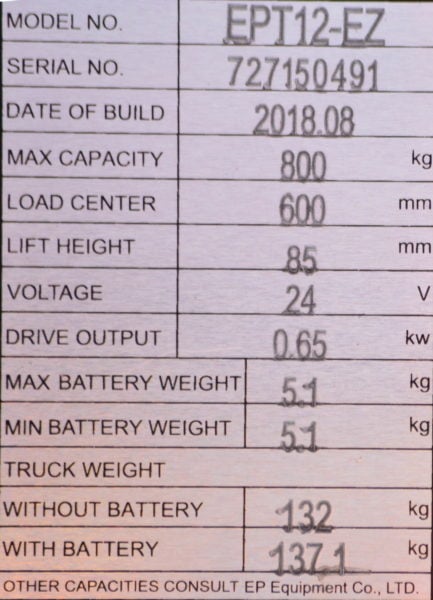
In the load plate above we have the model number and serial number (useful if you need to contact the manufacturer).
The build date is August 2018 – useful if you have a warranty from the build date (more likely you’ll have a warranty from the purchase date).
The maximum capacity of this electric pallet jack is 800kg with the load’s centre of gravity 600mm from the backrest or where the forks join the body of the machine.
The maximum lift height is 85mm. On this machine, no loading graph is included which means that the machine is rated to 800kg to the maximum height with 800kg.
The voltage is 24V – useful so you know the battery details – and it produces 0.65kW of drive power.
The battery weighs 5.1kg and all up, the total weight with battery is 137.1kg. So, you don’t want this unit falling on top of you from the back of a truck or off a dock. The weight also lets you know that one person alone should not be attempting to lift this into a truck. If you lift it into a truck on the back of a tail lift then you will know the potential weight in relation to the tail lift’s load plate. I.e. at its maximum capacity a tail lift or bridge plate should be able to take 137.1kg + 800kg plus the weight of any operator travelling with it. Our tail lift training course explains more.
Example 2: electric pallet jack (high lift)
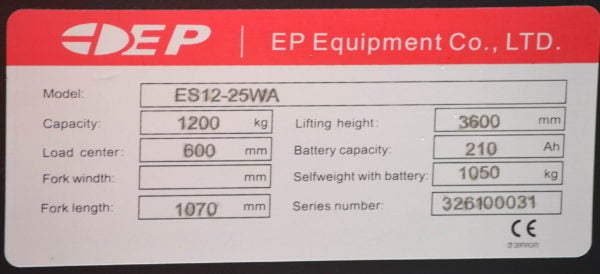
The model and serial number are shown.
The capacity of this electric pallet jack is 1200kg at a load centre of 600mm.
The maximum lifting height is 3600mm with a 600mm load centre (see the load rating chart below), but the fork length is 1070mm.
The unit weighs 1050kg with the battery so the theoretical maximum is 1050kg + 1200kg. Make sure your bridge plates are capable of taking that weight if you’re loading across a dock into a truck.
The load chart is shown below. It’s not unusual for machines imported from Asian countries to have dubious translations and spelling, and contradictory information, which is why it’s extra important that you look at all the data and take the lowest values.
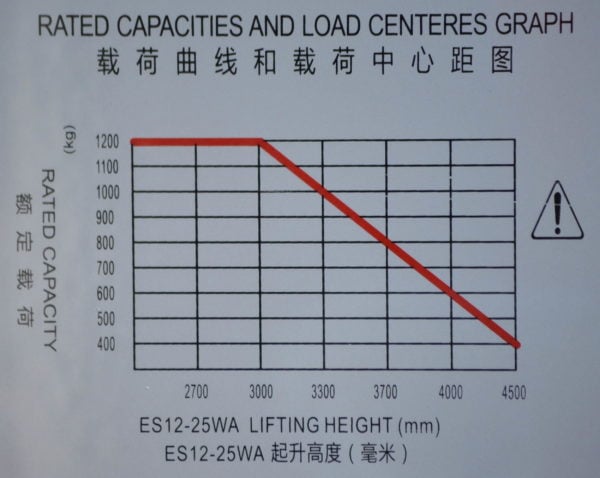
On the top left of the graph, you can see that the Y axis shows 1200kg. We know we can lift 1200kg with load centre of 600mm – even though the load centre isn’t explained on this chart. In fact, it’s fine to lift 1200kg up to 3000mm without any reduction in capacity.
However, if you want to lift another 300mm above that, the maximum capacity is reduced to 1000kg (look for the intersection of 1000kg on the Y axis and 3300mm on the X axis.)
On this machine, the other data plate already said the maximum height was 3600mm, so there’s little point in looking to 4500mm as this rating chart shows. However, at 3600mm, looking at the approximate weight, you would say that a little above 800kg is the maximum capacity when lifting to that height.
Example 3: Electric pallet jack
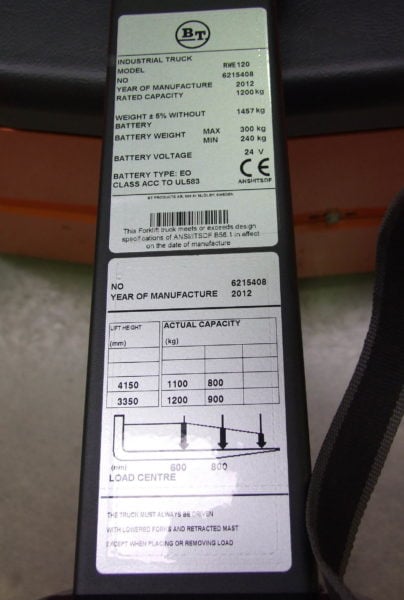
This is a much heavier ride-on unit with a bigger range, which you can tell by the battery weight (300kg). The things to look at on this data plate is that two different load centres are demonstrated: 600mm and 800mm.
Four measurements are given:
- 110kg at 600mm load centre can be lifted to 4150mm
- 800kg at 800mm load centre can be lifted to 4150mm
- 1200kg at 600mm load centre can be lifted to 3350mm
- 900kg at 800mm load centre can be lifted to 3350mm.
Basically, if the load centre is further from the backrest, the rated capacity diminishes.
Example 4: Manual pallet jack
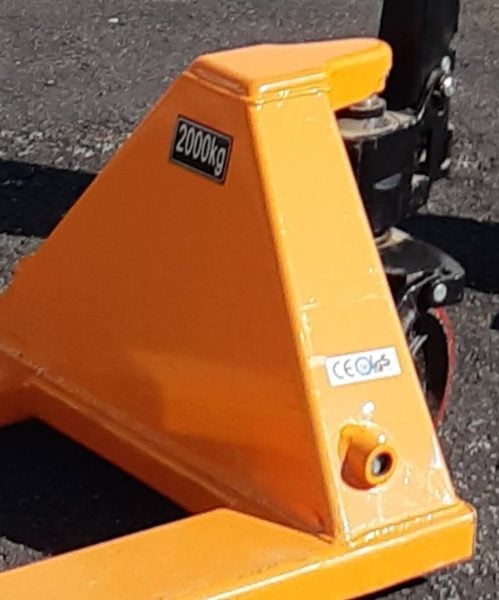
You can’t get much simpler than a manual pallet jack. You’ll simply see a load rating for the whole unit. This is for the load spread across both forks, not just on one fork. In pallet jack displayed in the image, it’s 2000kg, lifted to full height (usually between 150-200mm). There may or may not be a plate showing how much the jack itself weighs, but they typically weigh between 65-90kg.
Example 5: Semi-electric pallet truck
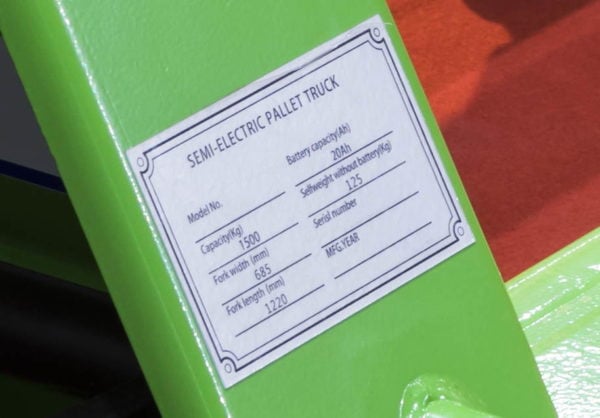
Following the examples above, this semi-electric pallet truck has a 1500kg capacity to the full lift height, which isn’t specified. The weight without the battery is 125kg. This data plate also shows the fork width (685mm) and length (1220mm). Other information is remaining to be added (model number, serial number and year of manufacture).
How much can you lift?
Now that you know the capacity of your walkie, you need to know how much the goods are that you will be lifting to ensure that you don’t overload the equipment.
With a manual pallet jack, some of them will take 2500kg and this all has to be manoeuvred using human power alone. You might have a policy that gives a maximum weight that you permit your operators to lift.

